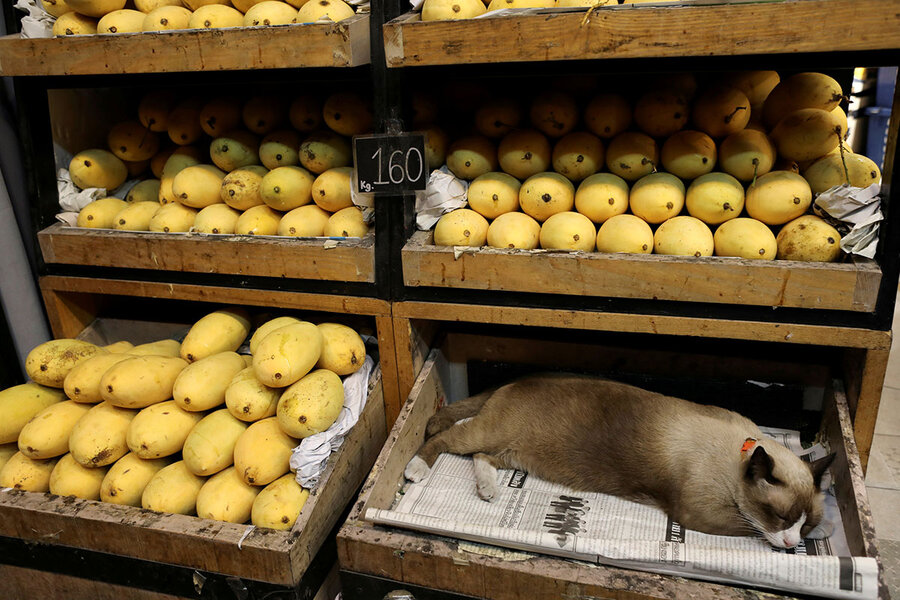Animal behavior: A purr-fect fit
Loading...
If you’re a cat, few places are more appealing than a cardboard box of just the right size. Even big cats such as lions and tigers seem to enjoy settling into a box like a loaf in a pan.
But why? Nobody knows for sure, but scientists think it has something to do with the way it feels.
“They like being in this cozy little snug,” says Nicholas Dodman, a professor emeritus of veterinary medicine at Tufts University. “It’s got to be sustained gentle pressure.” Professor Dodman worked with well-known animal behaviorist Temple Grandin to try to understand why pigs typically become more docile when placed in V-shaped troughs. They found that the troughs stimulated the pigs in a way that made them less susceptible to pain.
“Her term was ‘lateral side pressure,’ ” he says of Dr. Grandin, who also invented a machine for hugging cows. “I would have just called it squeezing.”
Cats are notoriously difficult to train, but Dodman knows of one method for getting a cat to sit where you want it to. All you need is some electrical tape (masking tape or painter’s tape will work, too).
Cut the tape into four 12-inch strips and arrange them into a square at the desired spot. There’s a good chance that the tape will trigger your cat’s box-sitting instinct, if only for a moment.
OK, but how do we know that the cat is interested in the shape on the floor, and not just the tape? After all, cats are famous for being curious.
To establish a control, take four more strips of tape and arrange them into an asterisk on a comparable spot on the floor. Now, see which one the cat chooses.
“My hypothesis would be that the cat is going to head for the square/rectangle, over the other shapes,” Dodman says. “If it looks like a gettable-into-able thing, they will try to get into it.”
Dodman suggests setting up a video camera to monitor the cats, and keep repeating the experiment. ”If you got six positive, versus none in the other shapes, that would probably be significant, statistically,” he says.
This column first appeared in the Feb. 4, 2019 edition of The Christian Science Monitor Weekly magazine as part of the Monitor's occasional Science at Home series.








